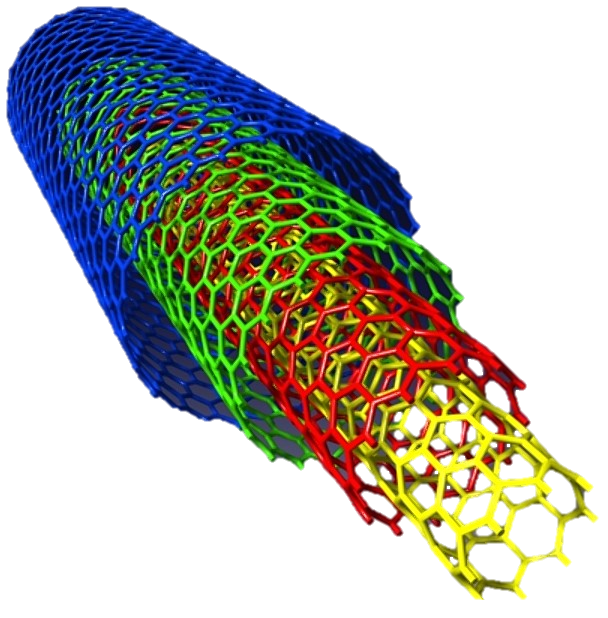Friction-free electron ballast transfer from the surface of CNT and CNTs carbon nanotubes (based on nano-micro-electronics PHD) Educational-research doctorate
Researcher and author PhD student : Afshin Rashid
Note: Because carbon nanotubes are able to pass electrical current through the surface without friction electron ballast transfer - this current is 100 times greater than the current flowing through copper wire - so nanotubes are an ideal choice for many. They are micro-electron applications.
Depending on their geometric shape, nanotubes become conductive or semiconductor, depending on how their graphite plates are rolled. In other words, because the nanotubes look at the molecular level like a woven bar of wire. The carbon atoms are connected in a hexagonal shape, and these hexagonal patterns form cylindrical walls that are only the size of It is a few nanometers. The torsion angle of a type of nanotube, defined as the angle between its hexagonal pattern axis and the tube axis, determines whether it is conductive or non-conductive. The change in radius also makes it possible to close the bandwidth and insulate the metal nanotube. So we can say that the two basic parameters that play a key role in this are the structure of the nanotube and the diameter and size of the conductor. Of A.The frictionless electronics of non-friction electrons from the surface of carbon nanotubes to the surface of the nanotube is appropriate .
CNTS carbon multi-walled nanotubes are made of many single-walled single-pipe tubes. Due to their additional layers, multi-walled pipes are stronger than single-walled types. CNTs are the preferred types of nanotubes for use in nano-electronic devices. In nanotubes, all three carbon atoms have the ability to store one lithium ion, while in graphite all six carbon atoms have the ability to store one lithium ion. Also, the ability to store energy in nanotubes is many times the volume of graphite electrodes. Electric voltage is generated by the passage of liquid through coils of single-walled and multi-walled carbon nanotubes. This technique is used to make liquid flow sensors to detect very small amounts of liquids and also to generate voltage in applications. Nano-microelectronics are also used. It has also been shown that high ionic liquids produce more voltage .
Conclusion:
The transfer of ballistic electrons without friction of the surface of the carbon nanotubes in the nanotube by the increase in thermal power and strength of nanotubes with the cube root of the mass of atoms and molecules fits. The heating increases strength and tensile strength of nanotubes six times and directed the transfer of ballistic electrons without friction of the surface of carbon nanotubes also increased.
Author: PhD Student ( Afshin Rashid)
PhD student in Nano-Microelectronics at Islamic Azad University, Science and Research Branch, Tehran




